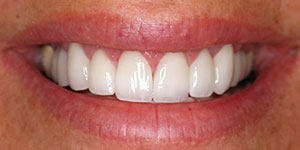
When you think of cosmetic dentistry, what comes to mind? A flashy smile? A perfectly straight row of teeth? A dazzling set of pearly whites? While all these things are possible with the right cosmetic dentistry treatment, and they sure look nice, they aren’t always necessary. In fact, sometimes the best way to enhance your smile is to fix something that isn’t broken but could be better. That’s where tooth bonding comes in: It’s a simple procedure meant to repair small chips or gaps in your teeth rather than make them bigger or change their shape.
Why choose tooth bonding, even for a small chip
 At a time when cosmetic dentistry procedures are becoming increasingly popular, it’s not surprising that you might be wondering how tooth bonding works. In addition to being an excellent alternative to veneers and crowns, tooth bonding can also be your first step toward a more permanent solution if you need some extra help with maintaining your smile.
At a time when cosmetic dentistry procedures are becoming increasingly popular, it’s not surprising that you might be wondering how tooth bonding works. In addition to being an excellent alternative to veneers and crowns, tooth bonding can also be your first step toward a more permanent solution if you need some extra help with maintaining your smile.
Treatments like dental implants or bridges are often expensive, invasive treatments that require professional assistance from a dentist or oral surgeon. While they may provide superior results in the long run, they aren’t always necessary—even for patients who want to improve their smile before going on a date! If you’re looking for something less complicated than dental implants but more effective than gum lifts and bleaching alone (but less costly than full-on porcelain veneers), then tooth bonding is an excellent choice for your needs.
Who Does Teeth Bonding Work Best For
While there are many people who may benefit from a dental crown, sometimes it is not the best option. If you have an older tooth that has been worn down or chipped and you don’t want to replace it with a crown, teeth bonding can be a good alternative. Teeth bonding can also be a good option for someone who wants to repair one tooth that has become discolored due to decay; this procedure will not require any removal of surrounding teeth or bone structure.
Teeth bonding is also an excellent choice for children whose baby teeth have become loose or broken due to trauma or decay; in fact, they are often used as part of routine orthodontic work after braces are removed.
What’s Involved in Teeth Bonding
Teeth bonding is usually done in one visit. It usually takes about an hour and a half, but you may need to schedule more time if the dentist wants to take photos or make impressions of your teeth. The dentist will use a local anesthetic to numb your gums, so you won’t feel any pain during the procedure.
The dentist will start by shaping the tooth using composite resin that matches the color of your natural teeth. Then they’ll bond this material onto your tooth with a special type of cement called resin composite adhesive (RCA). The whole process should be finished within one appointment!
Afterward, you may have some sensitivity in your gums for about 24 hours after bonding—a common side effect caused by exposure to the RCA used during treatment. You can use over-the-counter painkillers like ibuprofen or acetaminophen (Tylenol) for relief until it goes away completely.
Tooth bonding is a relatively simple procedure that works well to repair small chips or gaps.
Tooth bonding in Fort Lauderdale FL is a relatively simple procedure that works well to repair small chips or gaps. It can also be used to create a tooth-shaped veneer, which can be used to cover larger areas of discoloration and damage.
In order to create a bond, the dentist will need to prepare your teeth by removing the outer layer of enamel from them. To do this, he’ll use a special type of sandpaper-like tool that removes only the outermost layer of enamel without harming your healthy tissue beneath it. Once you’ve been prepared for bonding and have been given anesthesia if necessary (it’s usually not necessary), your dentist will apply an adhesive material called composite resin onto your tooth’s surface in order for it adhere properly with your natural tooth structure during setting period.
In conclusion, tooth bonding is a great way to fix small chips and gaps in your teeth. It’s quick and easy, but it still looks natural and isn’t permanent. We hope that this article has helped you understand more about the process and decide if it’s right for you!
























